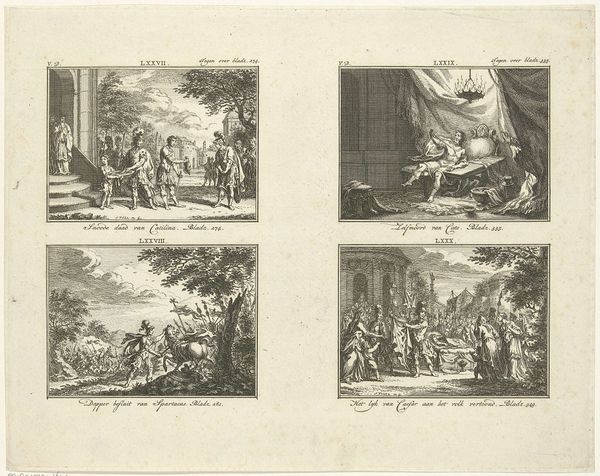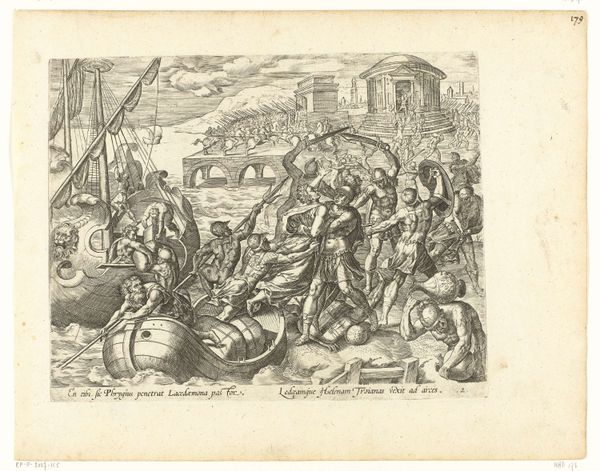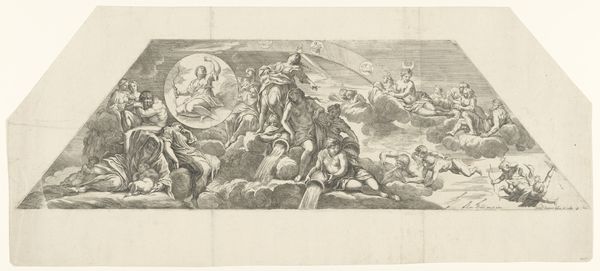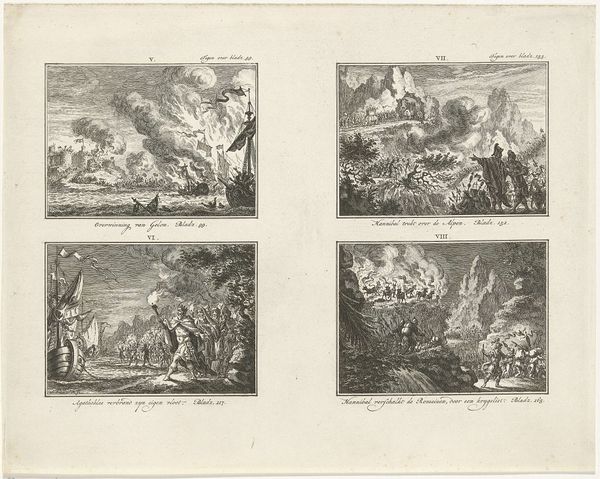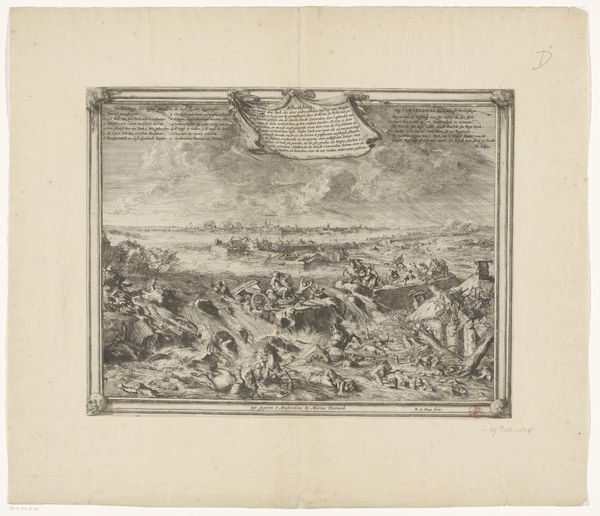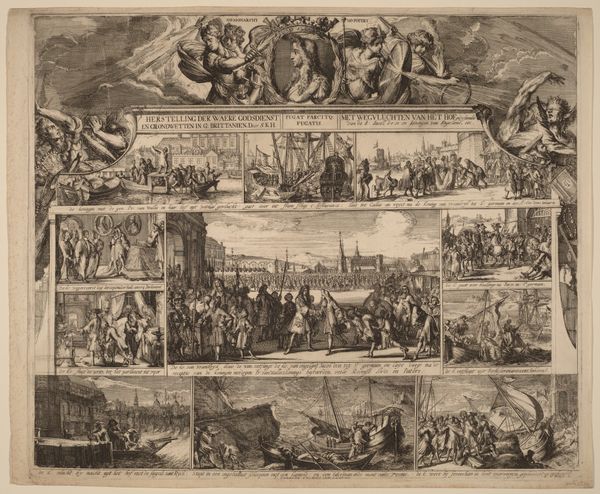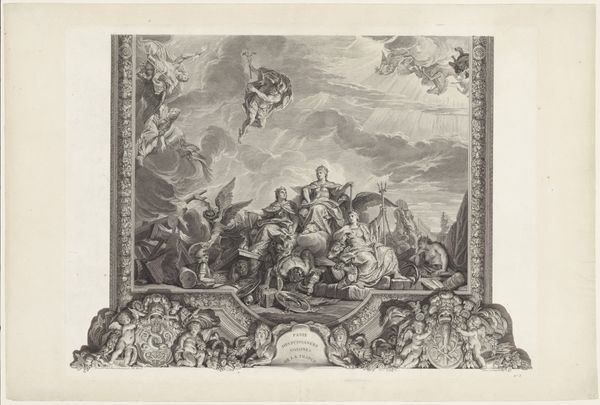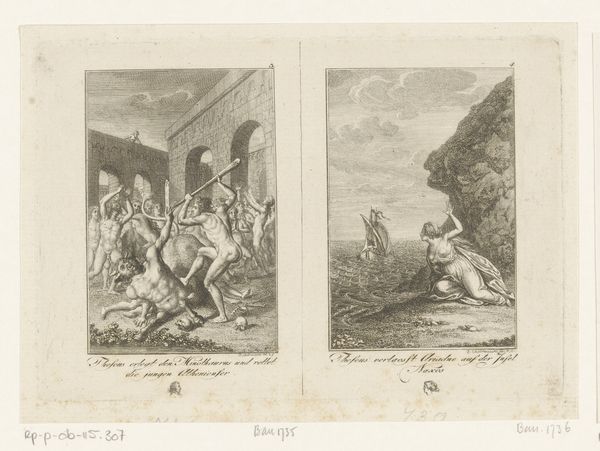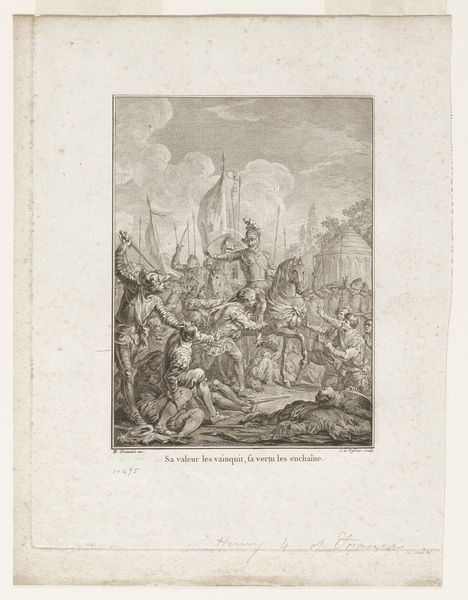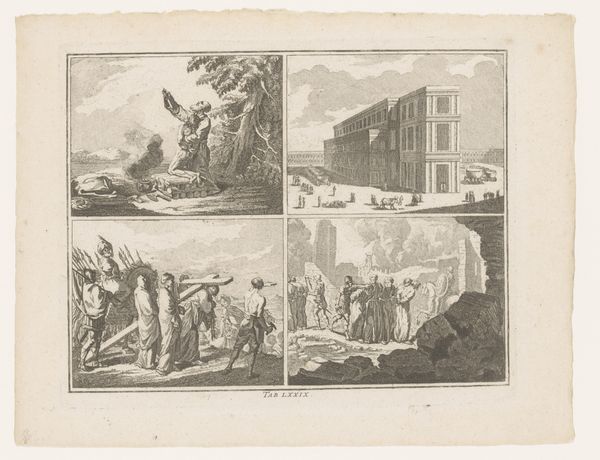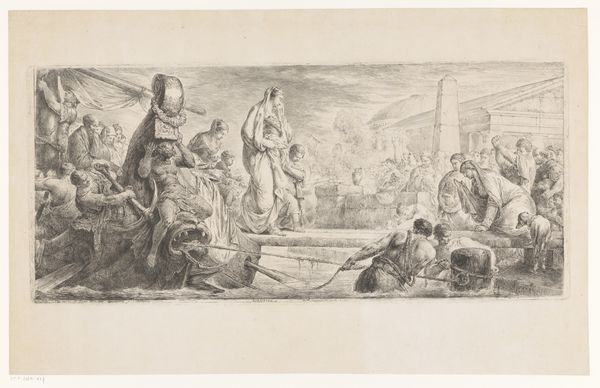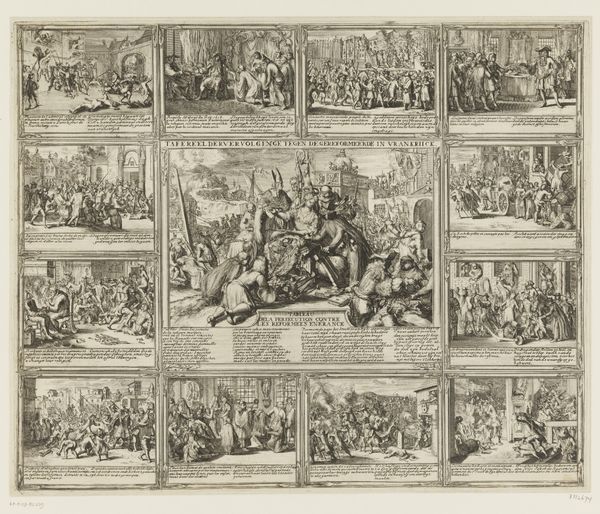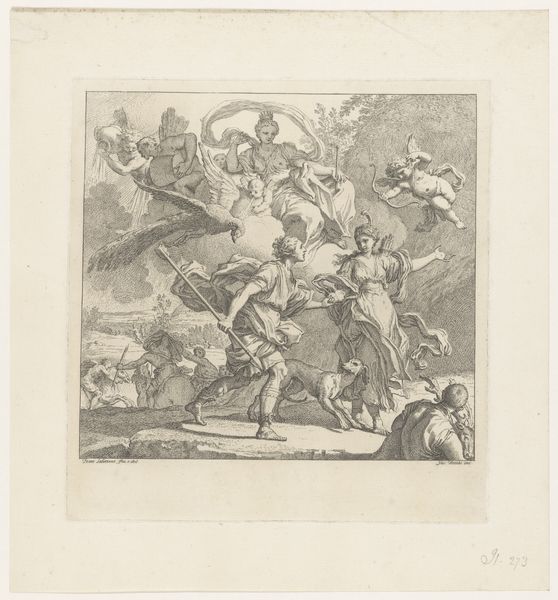
print, engraving
#
narrative-art
#
baroque
# print
#
old engraving style
#
history-painting
#
engraving
Dimensions: height 257 mm, width 304 mm
Copyright: Rijks Museum: Open Domain
Editor: This print, made in 1691, is titled *Vlucht van Jacobus II naar Rochester en Parijs, 1688-1691.* It’s an engraving, and attributed to an anonymous artist. The division into four panels creates a sequential narrative. How do you approach a work like this with so much detail packed into such a small space? Curator: One must first consider the relationship between the individual panels. Each functions as a distinct unit, yet together they form a cohesive whole. Note the use of line: it delineates forms but also creates texture and movement, particularly in the rendering of the sea and the clothing. Observe how light and shadow, though limited by the engraving medium, define spatial depth. What structural relationships do you observe in the sequencing, if any? Editor: I notice the first three panels seem to focus on departures by sea. It could indicate the most dramatic parts of the depicted narrative? The last is on land but retains the most figures. Is the number of figures important? Curator: Indeed, the figures’ aggregation prompts us to think of them, perhaps, as a signifying mass. The variation in their posture creates an appealing formal composition. The formal repetition may echo, amplify, or contrast with the thematic thrust of each event shown in each pane. Also, consider the overall structure itself, with each view or 'take' framed, as it were. How do those borders reinforce meaning? Editor: The borders act as windows, almost, creating different scenes, but the crosshatching provides consistency across each. Are there other areas of detail that draw your eye in? Curator: The rendering of the ships – note the meticulous detail in the rigging. Further consideration needs to be made about the use of light, both literal and metaphorical, in Baroque prints to suggest moral content and larger narratives. What conclusions might one draw, simply from that, do you think? Editor: That is a helpful way to think about this type of historical artwork. Now I have more tools for my analytic lens.
Comments
No comments
Be the first to comment and join the conversation on the ultimate creative platform.
